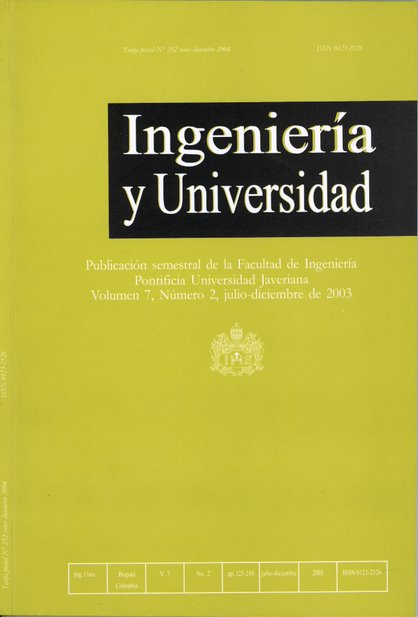Abstract
The use of solar radiation as source of an illumination system for workstations is proposed. For this, a system to collect solar radiation with a parabolic mirror was built. The visible portion of the spectrum of this radiation is then transmitting through a fixture of optic fiber and emitted as a punctual light in the work area. To characterize the system, operation tests with solar radiation were conducted in order to describe the behavior of the emitter by photometry tests like Candlepower distribution and cone of dispersion.
Ballman, T. L. (2001), Photometry and the Photometric Data Sheet, Indoor.
Dubroff, R.y Marshall, S. V. (1997), Electromagnetismo, conceptos y aplicaciones, cuarta edición, México, Prentice Hall Hispanoamericana.
Florida Solar Energy Center (1998), Stand-Alone Photovoltaic Lighting Systems, first edition.
Illuminating Engineering Society (lES) (1957), Lighting Handbook.
Naciones Unidas (1977), Reglas mínimas para el tratamiento de los reclusos, Ginebra.
Niebel, B.W. (1993), Ingeniería industrial métodos, tiempos y movimientos, novena edición, México, Alfaomega.
Oficina Internacional del Trabajo. Ministerio de Trabajo y Seguridad Social (1989), Enciclopedia de salud y seguridad en el trabajo, Madríd, Fareso.
Quintana, L. (2003), Notas de clase ingeniería de seguridad y medio ambiente.
Rensselaer Polytechnic Institute (2002), "Lighting from afar". En: Revista Lighting Futures, 1 (3).
Rodríguez, H. y González, F. (1992), Manual de radiación solar en Colombia, Vol. 1, Bogotá.
Tipler, P. A. (1994), Física, tercera edición, Madrid, Reverté.
Veitch, J. A., Newsham, G.R. (2002), IRC'S Lighting Quality Project. En: www.nrc.cajirc. Fecha de consulta: noviembre de 2002.
Wilson, J. D. (1996), Física, segunda edición, México, McGraw Hill.
Zik, O., Karni, J. y Kribus, A. (2002), The TROF (Tower reflector with optical fibers): a new degree of freedom for solar energy systems, febrero.

This work is licensed under a Creative Commons Attribution 4.0 International License.


